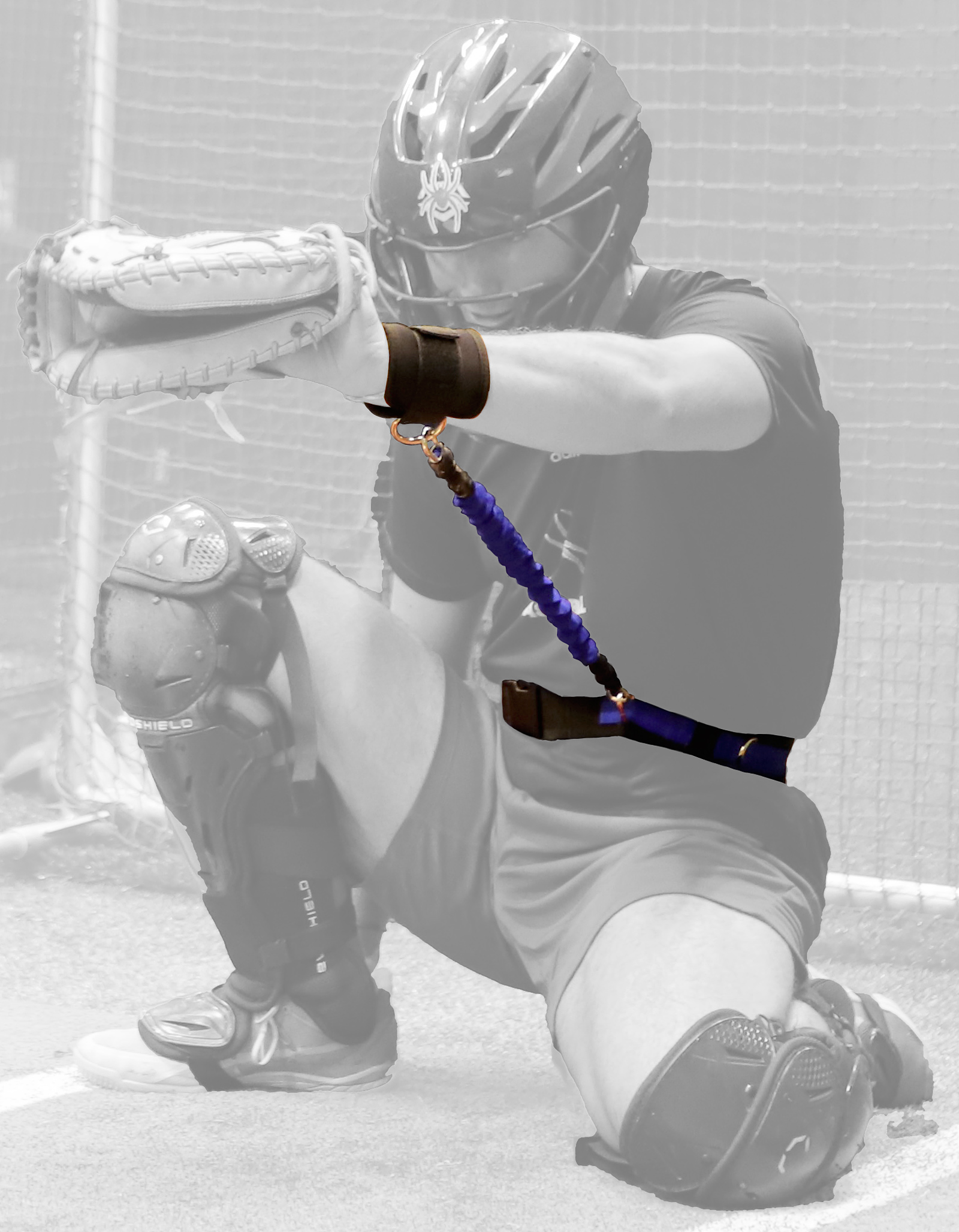Portrait
Catching on

Receiving is a skill many sports fans first associate with football. But it’s also a crucial part of a catcher’s role in baseball. How expertly a catcher receives and frames a pitch going as fast as 100 mph into his glove can influence an umpire’s ball and strike calls on borderline pitches and significantly affect the outcome of a game.
Catchers across dozens of MLB and NCAA baseball teams are now improving their receiving skills by using the Catcher Resistance Training, or CRT, belt invented by catcher Kyle Schmidt, ’19, a standout student athlete for Richmond who now plays in the Minnesota Twins’ minor league system. Schmidt combined his athletic skills with his business-degree acumen to fill an important gap in a catcher’s gear.
The spark for the CRT belt came in September 2020 when Schmidt couldn’t find enough space for his usual training setup of resistance bands and other gear. “I needed something more compact and mobile,” he says. An internet search showed him the product he wanted didn’t exist — yet. “I decided to make my own.”
The CRT uses a resistance cable to connect a wrist band to the catcher’s belt. The resulting tension helps improve a player’s glove strength and speed and make his movements more controlled, consistent, and efficient. “When the resistance band is attached to your hip, you feel how you are leveraging and creating force into the ball from your body,” he explains.
Schmidt enlisted his grandmother, a master quilter, to sew D-rings onto the belt of his first prototype, cobbled together from parts he bought at hardware and sporting goods stores. As he iterated his model, he sought advice from Joel Mier, lecturer of marketing in the Robins School of Business. “He told me not to prioritize the CRT belt over my main career path but as a small venture to focus on growth and just getting into the market,” Schmidt says.
Schmidt started with word-of-mouth sales in summer 2021, traveling with a suitcase of CRT belt components so he could fill orders between games. Today, 14 of MLB’s 30 franchises and more than 60 college teams — including Richmond — use the CRT.
“What was so special about Kyle as a player was his receiving skills,” says Nate Mulberg, an assistant baseball coach at Richmond. “If any of our catchers can replicate Kyle’s ability to receive pitches by using the CRT belt, then we’re going to be in great shape.”
The CRT belt is helping recreational players too; it is now sold online by Dick’s Sporting Goods and in a third of Scheels sporting goods locations. “I am proud that the CRT belt has been able to become part of many catchers’ routines,” Schmidt says. “I’m excited to see where it goes.”
